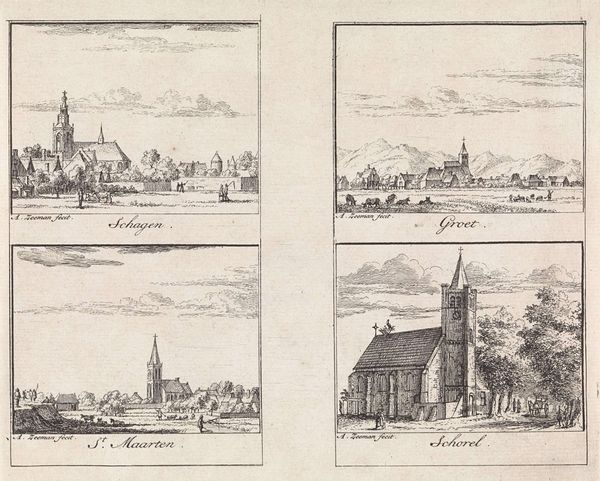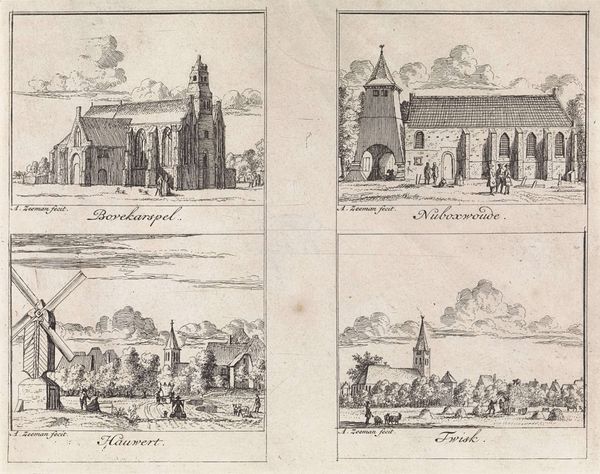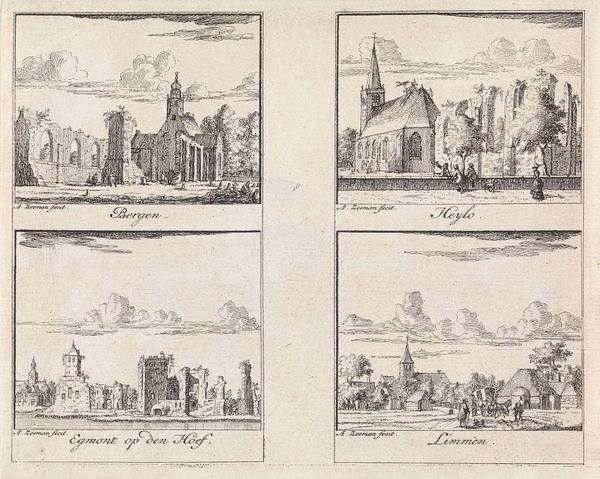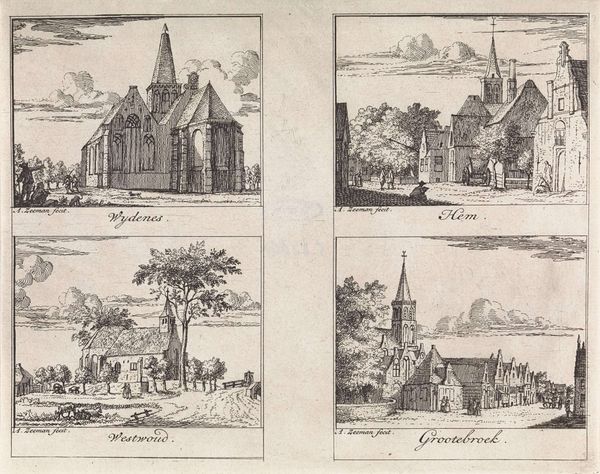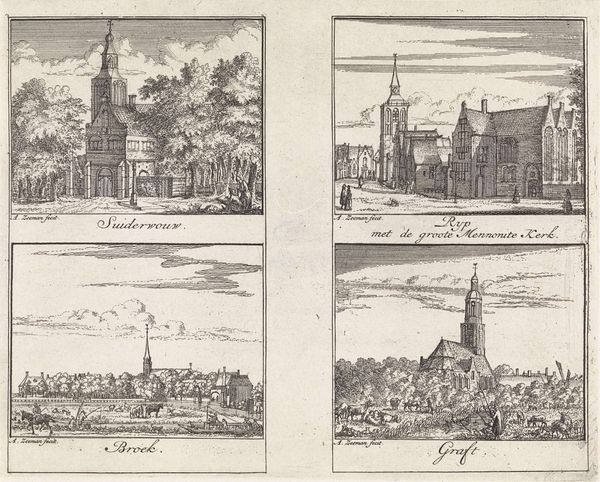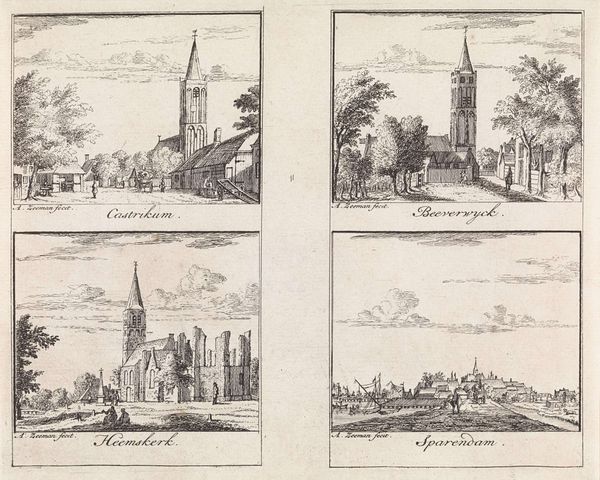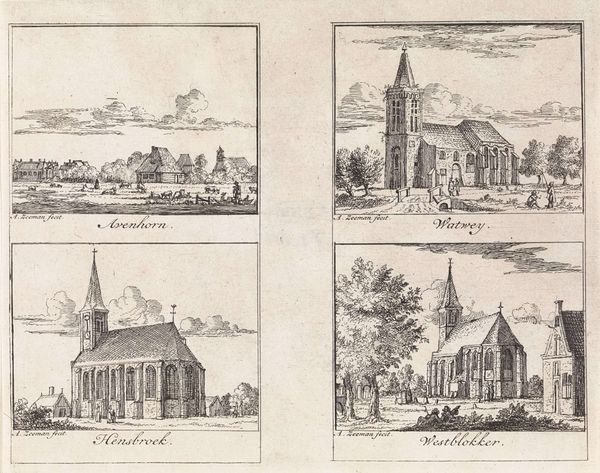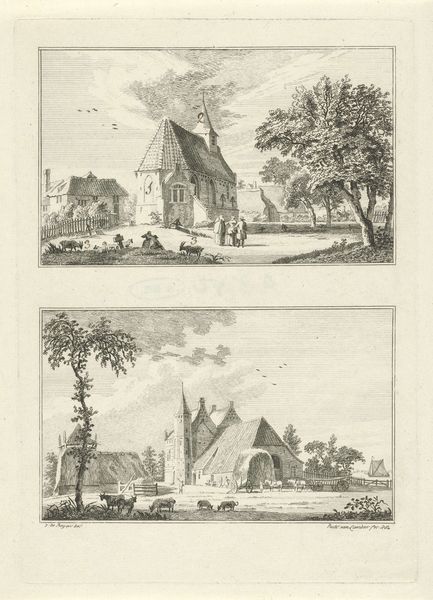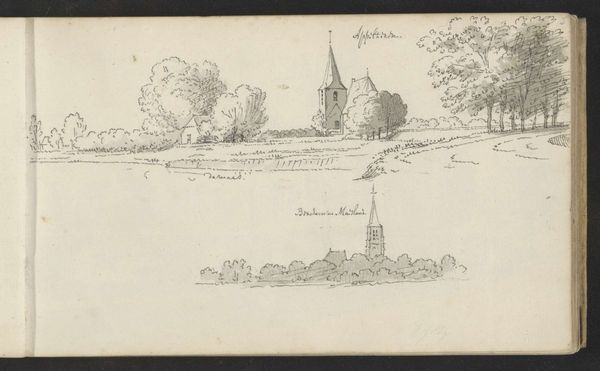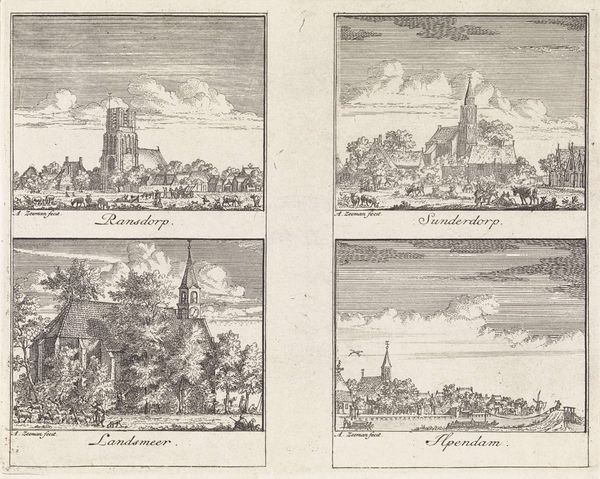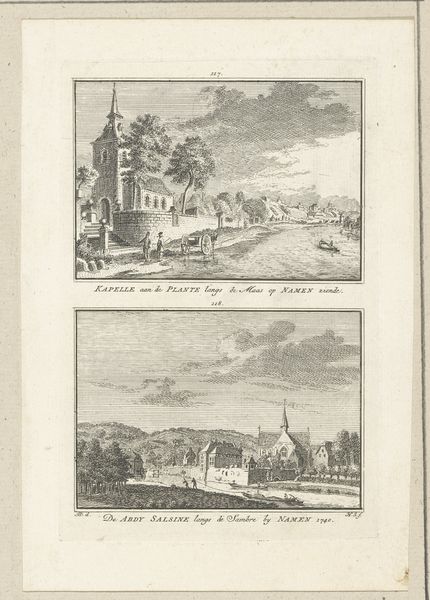
print, etching
#
baroque
#
dutch-golden-age
# print
#
etching
#
landscape
#
cityscape
Dimensions: height 147 mm, width 183 mm
Copyright: Rijks Museum: Open Domain
Abraham Zeeman made this print called "Views of Abbekerk, Hoogwoud, Winkel, and Haringhuizen," sometime in the first half of the 18th century. Zeeman was one of many Dutch artists making topographical prints at the time, and these images of towns in the northern Netherlands are great examples of the public role of art in the Dutch Golden Age. On the one hand, prints like these spoke to local pride in the economic success of Dutch towns and villages in this era. On the other, they helped to standardize an image of "Dutchness" that was spread through the art market, and they reflect the culture of the Dutch Reformed Church that dominated the region at the time. Each of the towns shown has its church rendered in detail. Studying archives of prints and maps, and reading local histories, help us to understand the social and economic forces at work in the Dutch Golden Age, and the ways that art contributed to them.
Comments
No comments
Be the first to comment and join the conversation on the ultimate creative platform.
